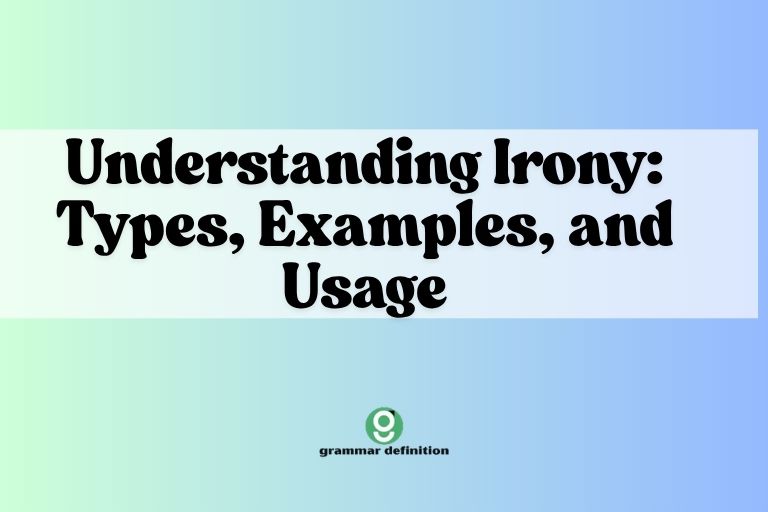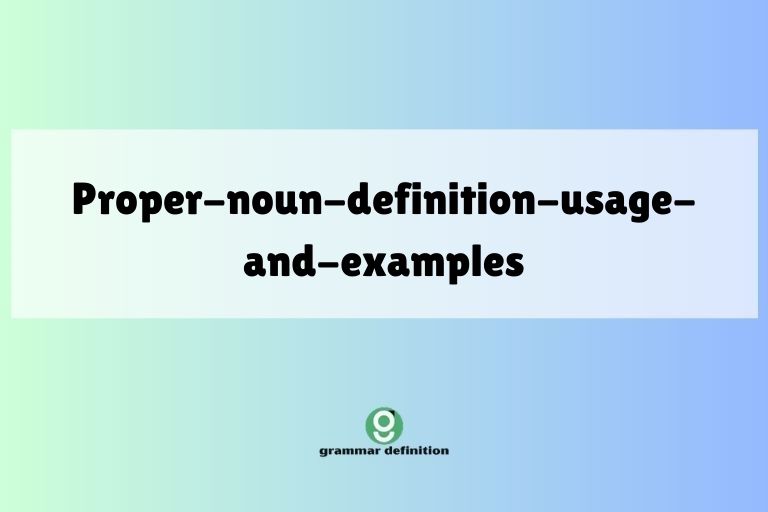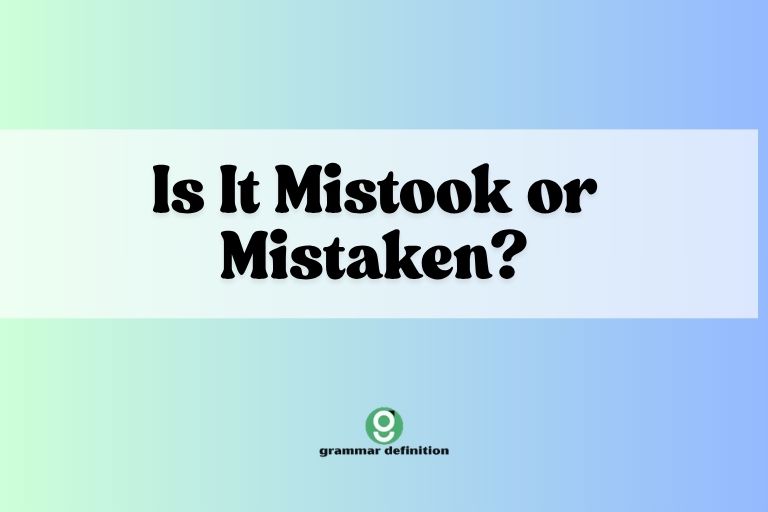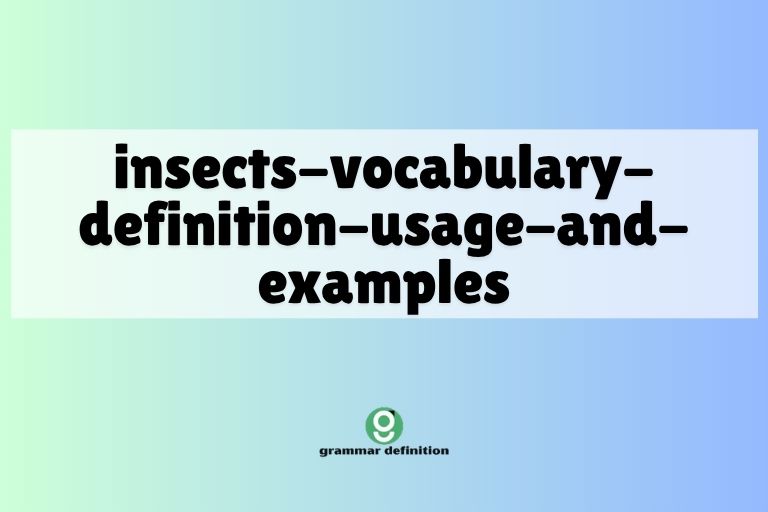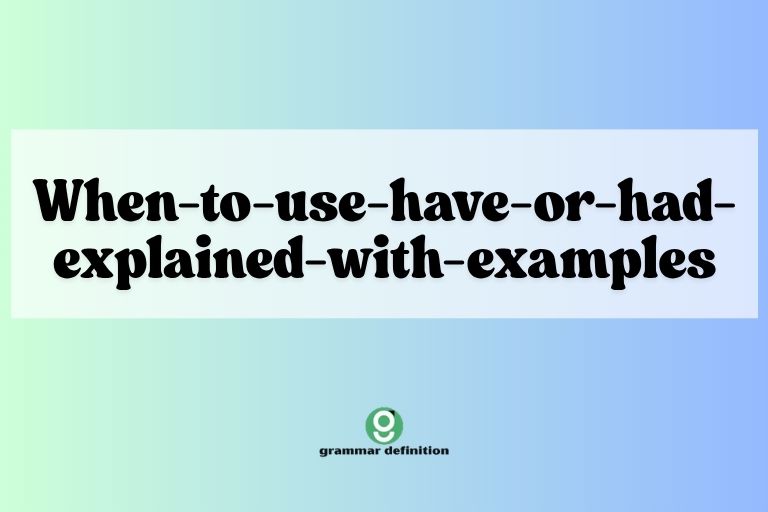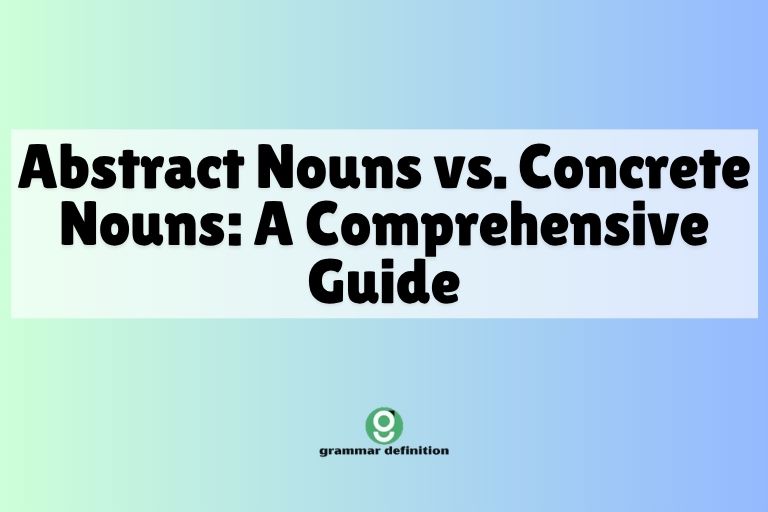“Shut” Past Tense: Mastering This Irregular Verb
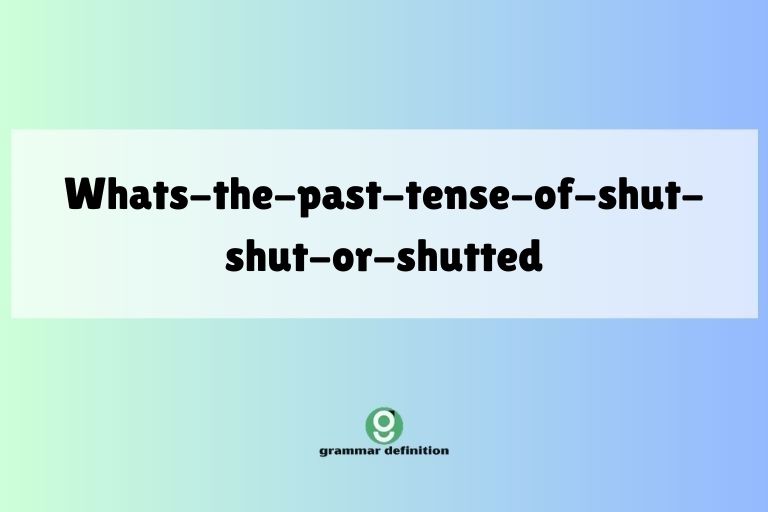
Understanding the past tense of verbs is crucial for effective communication in English. One verb that often causes confusion is “shut.” Is it “shutted,” or does it remain “shut” in the past tense?
This article will comprehensively explore the past tense of “shut,” clarifying its correct usage, providing numerous examples, and offering practice exercises to solidify your understanding. This guide is perfect for English language learners, students, and anyone looking to improve their grammar skills.
By the end of this article, you’ll confidently use “shut” in various contexts, understanding its nuances and avoiding common mistakes. We will delve into definitions, structural breakdowns, usage rules, and common errors, ensuring a thorough grasp of this essential verb.
Table of Contents
- Introduction
- Definition of “Shut”
- Structural Breakdown
- Types and Categories of “Shut” Usage
- Examples of “Shut” in Different Tenses
- Usage Rules for “Shut”
- Common Mistakes with “Shut”
- Practice Exercises
- Advanced Topics
- Frequently Asked Questions
- Conclusion
Definition of “Shut”
The verb “shut” means to move something into a position that covers an opening; to close something. It can also mean to prevent access to a place or to stop something from operating. “Shut” is classified as an irregular verb, which means its past tense and past participle forms do not follow the standard -ed ending rule.
Function: “Shut” functions as a transitive verb (requiring a direct object) and an intransitive verb (not requiring a direct object). It’s used to describe actions related to closing, stopping, or preventing something.
Contexts: The word “shut” appears in various contexts, from everyday conversations to formal writing. Here are some examples:
- Closing a door or window
- Turning off a machine
- Closing a business
- Silencing someone
Structural Breakdown
Understanding the structure of “shut” is crucial for using it correctly. Here’s a breakdown:
- Base Form: shut
- Past Simple: shut
- Past Participle: shut
- Present Participle: shutting
Notice that the past simple and past participle forms of “shut” are the same as the base form. This is a characteristic of many irregular verbs.
The present participle is formed by adding “-ing” to the base form, with a doubling of the “t” due to the short vowel sound preceding it.
Types and Categories of “Shut” Usage
The verb “shut” can be used in several ways, depending on the context. Let’s explore some key categories:
Transitive Use
When “shut” is used transitively, it takes a direct object. This means the action of shutting is performed on something.
Example: She shut the door.
Intransitive Use
When “shut” is used intransitively, it does not take a direct object. The action of shutting happens without acting upon anything specific.
Example: The door shut with a loud bang.
Phrasal Verbs with “Shut”
“Shut” is often used in phrasal verbs, which are combinations of a verb and a preposition or adverb. These phrasal verbs have specific meanings.
- Shut down: To stop operating
- Shut up: To stop talking (often impolite)
- Shut out: To prevent someone from entering or participating
Examples of “Shut” in Different Tenses
To fully grasp the usage of “shut,” let’s examine various examples in different tenses. The following tables provide illustrative sentences in the present, past, and future tenses, as well as with phrasal verbs.
Present Tense Examples
This table shows usages of “shut” in the present simple and present continuous tenses.
| Tense | Example Sentence |
|---|---|
| Present Simple | I shut the window every night before bed. |
| Present Simple | He shuts the computer down after work. |
| Present Simple | The store shuts at 9 PM. |
| Present Simple | We shut off the lights to save energy. |
| Present Simple | They shut the factory every year for maintenance. |
| Present Simple | She always shuts the door quietly. |
| Present Simple | The cat shuts its eyes when petted. |
| Present Continuous | She is shutting the box carefully. |
| Present Continuous | They are shutting down the old factory. |
| Present Continuous | He is shutting the laptop because the meeting is over. |
| Present Continuous | The manager is shutting the office early today. |
| Present Continuous | The company is shutting down its international operations. |
| Present Continuous | The mechanic is shutting off the engine to inspect it. |
| Present Continuous | She is gently shutting the birdcage door. |
| Present Simple | The gate automatically shuts at dusk. |
| Present Simple | The program shuts down if it detects an error. |
| Present Simple | The valve shuts off the water supply. |
| Present Continuous | The rescue team is shutting off the gas line. |
| Present Continuous | The government is shutting down illegal websites. |
| Present Continuous | The school is shutting its doors for the summer. |
Past Tense Examples
This table demonstrates the use of “shut” in the past simple tense, which is the same as the base form.
| Tense | Example Sentence |
|---|---|
| Past Simple | I shut the door behind me. |
| Past Simple | She shut the book and sighed. |
| Past Simple | They shut down the factory last year. |
| Past Simple | He shut off the lights before leaving. |
| Past Simple | We shut the windows because it started to rain. |
| Past Simple | The store shut early due to the storm. |
| Past Simple | The computer shut down unexpectedly. |
| Past Simple | She shut her eyes and took a deep breath. |
| Past Simple | He shut the lid of the box tightly. |
| Past Simple | They shut the gate to keep the animals in. |
| Past Simple | We shut off the water before fixing the pipe. |
| Past Simple | The old theater shut its doors forever. |
| Past Simple | She shut the curtains to block out the sunlight. |
| Past Simple | He shut down the program after finishing his work. |
| Past Simple | They shut the discussion because it was getting heated. |
| Past Simple | We shut the project down because we ran out of funding. |
| Past Simple | The manager shut the meeting down early. |
| Past Simple | She shut him out of her life. |
| Past Simple | He shut his ears to her complaints. |
| Past Simple | They shut down all communications. |
| Past Simple | The board shut down the proposal. |
| Past Simple | She shut the critics down with her performance. |
| Past Simple | He shut the operation down after the incident. |
| Past Simple | They shut the debate down for lack of evidence. |
Past Participle Examples
Here are examples of “shut” used as a past participle, often in perfect tenses or passive voice constructions.
| Tense/Voice | Example Sentence |
|---|---|
| Present Perfect | I have shut the window. |
| Past Perfect | She had shut the door before I arrived. |
| Future Perfect | By the time you get here, they will have shut down the system. |
| Passive Voice | The store was shut due to the holiday. |
| Present Perfect | The company has shut down several branches. |
| Past Perfect | He had already shut the computer off when the power went out. |
| Future Perfect | By next year, they will have shut down the old power plant. |
| Passive Voice | The factory was shut down by the government. |
| Present Perfect | We have shut the project because of budget cuts. |
| Past Perfect | They had shut the gate before the storm arrived. |
| Future Perfect | By the time we get back, they will have shut the water supply off. |
| Passive Voice | The road was shut down due to the accident. |
| Present Perfect | She has shut herself off from the world after the tragedy. |
| Past Perfect | He had shut his feelings down for years. |
| Future Perfect | By the end of the week, they will have shut down the website. |
| Passive Voice | The meeting was shut down abruptly. |
| Present Perfect | The investigation has been shut down due to lack of evidence. |
| Past Perfect | The protesters had been shut down by the police. |
| Future Perfect | The case will have been shut down by the judge. |
| Passive Voice | The discussion was shut down because it was unproductive. |
| Present Perfect | The museum has shut its doors for renovations. |
| Past Perfect | The borders had been shut due to the pandemic. |
| Future Perfect | The deal will have been shut down by regulators. |
| Passive Voice | The program was shut down because of bugs. |
Future Tense Examples
Examples of “shut” used in the future simple and future continuous tenses.
| Tense | Example Sentence |
|---|---|
| Future Simple | I will shut the window later. |
| Future Simple | She will shut down the computer at 5 PM. |
| Future Simple | They will shut the store for renovations. |
| Future Simple | He will shut off the gas before working on the stove. |
| Future Simple | We will shut the project down if it doesn’t meet the deadline. |
| Future Simple | The company will shut its offices on the holiday. |
| Future Simple | The gate will shut automatically at 6 PM. |
| Future Continuous | I will be shutting the door shortly. |
| Future Continuous | She will be shutting down the system at the end of the day. |
| Future Continuous | They will be shutting the water supply off for maintenance. |
| Future Continuous | He will be shutting the lights off as he leaves. |
| Future Continuous | We will be shutting the operation down gradually. |
| Future Continuous | The technician will be shutting down the machine for repairs. |
| Future Continuous | The security guard will be shutting the building at midnight. |
| Future Simple | The library will shut its doors early tomorrow. |
| Future Simple | The program will shut itself down if it detects an error. |
| Future Simple | The emergency valve will shut off the flow automatically. |
| Future Continuous | The engineers will be shutting down the reactor for safety checks. |
| Future Continuous | The authorities will be shutting down the highway due to the storm. |
| Future Continuous | The school will be shutting down its online platform for upgrades. |
Usage Rules for “Shut”
Here are the key rules to remember when using “shut”:
- Past Tense and Past Participle: The past tense and past participle of “shut” are both “shut.” Avoid using “shutted.”
- Transitive vs. Intransitive: Pay attention to whether “shut” requires a direct object.
- Phrasal Verbs: Understand the specific meanings of phrasal verbs using “shut.”
- Tense Consistency: Ensure that you maintain consistent tense throughout your writing or speech.
Common Mistakes with “Shut”
One of the most common mistakes is using “shutted” as the past tense or past participle of “shut.” This is incorrect.
| Incorrect | Correct |
|---|---|
| I shutted the door. | I shut the door. |
| The store was shutted. | The store was shut. |
Another common mistake is misusing phrasal verbs. For example, confusing “shut down” with “shut up” can lead to misunderstandings.
Practice Exercises
Test your understanding of “shut” with these practice exercises.
Exercise 1: Fill in the Blanks
Fill in the blanks with the correct form of “shut” (present, past, or past participle).
| Question | Answer |
|---|---|
| 1. I always ______ the window before leaving. | shut |
| 2. She ______ the door quietly. | shut |
| 3. They have ______ down the factory. | shut |
| 4. The store was ______ due to the holiday. | shut |
| 5. He will ______ off the lights. | shut |
| 6. She is ______ the box now. | shutting |
| 7. We had ______ the gate before it rained. | shut |
| 8. The computer ______ down unexpectedly. | shut |
| 9. By tomorrow, they will have ______ the project. | shut |
| 10. I am ______ the door behind me. | shutting |
Exercise 2: Correct the Sentences
Correct the following sentences, which may contain errors in the use of “shut.”
| Incorrect Sentence | Correct Sentence |
|---|---|
| 1. I have shutted the window. | I have shut the window. |
| 2. She shutted the door behind her. | She shut the door behind her. |
| 3. The store was shutted early. | The store was shut early. |
| 4. He will be shutting up the computer soon. | He will be shutting down the computer soon. |
| 5. They had shutted down the operation. | They had shut down the operation. |
| 6. We are shutting the store up for the night. | We are shutting the store down for the night. |
| 7. She is shutting out the noise. | She is shutting out the noise. |
| 8. He shutted his mouth. | He shut his mouth. |
| 9. The program shutted down automatically. | The program shut down automatically. |
| 10. The borders were shutted. | The borders were shut. |
Exercise 3: Sentence Construction
Create sentences using “shut” in the following tenses and forms:
- Present Simple (transitive)
- Past Simple (intransitive)
- Present Perfect (with “shut down”)
- Past Perfect (passive voice)
- Future Simple (with “shut out”)
| Tense/Form | Example Sentence |
|---|---|
| Present Simple (transitive) | She shuts the window every evening. |
| Past Simple (intransitive) | The door shut with a bang. |
| Present Perfect (with “shut down”) | The company has shut down its operations. |
| Past Perfect (passive voice) | The project had been shut down due to lack of funding. |
| Future Simple (with “shut out”) | They will shut out any dissenting voices. |
Advanced Topics
For advanced learners, consider these more complex aspects of using “shut”:
- Subjunctive Mood: While less common, “shut” can appear in the subjunctive mood, often in formal or literary contexts.
- Figurative Language: “Shut” can be used metaphorically to describe emotional or psychological states (e.g., “He shut down emotionally”).
- Regional Variations: While “shutted” is universally considered incorrect, some dialects may have variations in usage that are non-standard.
Frequently Asked Questions
- Is “shutted” ever correct?
No, “shutted” is never the correct past tense or past participle of “shut.” The correct form is always “shut.”
- How do I remember that “shut” is irregular?
Practice and repetition are key. Try creating flashcards or using “shut” in various sentences to reinforce its irregular nature. Comparing it to other irregular verbs can also help.
- What’s the difference between “shut down” and “shut up”?
“Shut down” means to stop operating, while “shut up” means to stop talking. “Shut up” is often considered impolite and should be used with caution.
- Can “shut” be used in the passive voice?
Yes, “shut” can be used in the passive voice (e.g., “The store was shut”). This indicates that something was closed or stopped by an external force.
- Is “shut” used differently in British English?
No, the usage of “shut” is generally the same in British and American English. The past tense and past participle remain “shut” in both dialects.
- What are some synonyms for “shut”?
Synonyms for “shut” include “close,” “seal,” “secure,” “fasten,” and “block.” The best synonym depends on the specific context.
- How can I improve my understanding of irregular verbs like “shut”?
Focus on memorization techniques like flashcards or mnemonic devices. Practice using irregular verbs in sentences and pay attention to how they are used in context when reading or listening to English.
- Is it okay to use “shut” in formal writing?
Yes, “shut” is perfectly acceptable in formal writing, as long as it is used correctly. Be mindful of the tone and context to ensure it fits the overall style.
Conclusion
Mastering the past tense of “shut” is essential for accurate and effective communication in English. Remember that the past tense and past participle of “shut” are both “shut,” and avoid the common mistake of using “shutted.” Pay attention to the context, whether it’s transitive, intransitive, or part of a phrasal verb, to ensure correct usage.
By practicing with the examples and exercises provided, you can confidently use “shut” in your writing and speech.
Continued practice and attention to detail will help you solidify your understanding of this irregular verb and improve your overall grammar skills. Keep practicing and you’ll become more confident in your English language abilities.

